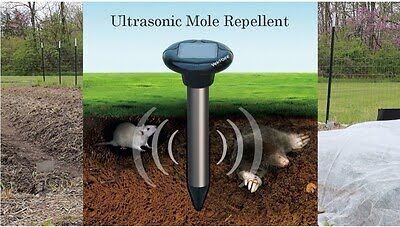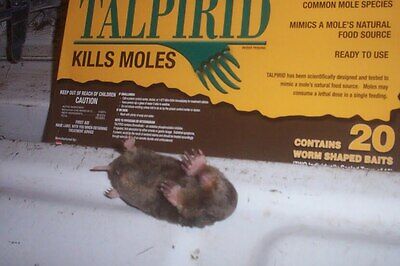Call us: 442-232-2575
Welcome to Oceanside Mole Control! We are a wildlife control company which services San Diego County, California. We specialize in the removal of moles - the animals - and other unwanted animals you may have on your property. Moles love to dig tunnels, resulting in large molehills and tunnels all over your yard. While these aren't exactly dangerous, they can damage your landscape and backyard and cause a nuisance. To deal with moles, we use professional trapping methods and make sure to prevent moles from overrunning your property again. Call us 24/7 at 442-232-2575 to schedule an appointment the same day or the next. We aren't considered Oceanside's best animal removal company for nothing! You can check out our Oceanside mole removal prices. Some of the services we offer include:
- 100% Mole Removal Via Trapping
- Full Property, Garden, & Yard Inspections
- Prevention and Lawn Treatments
- Poison-Free Mole Control
- Effective Mole Trapping Methods
- Repair of Lawn and Sod, Mole Hill Removal
Some Educational Articles I Wrote:
CALL US ANYTIME AT 442-232-2575

We are experts in mole control and are not your typical Oceanside, California pest control or exterminator company. First, we do not use poisons or the majority of repellents, since they do not work. Moles are difficult to remove and can only really be completely removed from your yard with mole traps, a process we have practiced and perfected over the years. In addition, if a mother mole has babies, we will make sure to remove her pups by hand before dealing with the mother mole. We are not a typical Oceanside mole exterminator company. We completely solve your mole problem by taking these steps:
- Inspect the entire property grounds - lawn, yard, garden, etc.
- Set several pro traps in mole tunnels - the correct and safe way!
- Remove all moles as they are caught and monitor for activity
- Once there is no more activity and no more moles caught, we're done
- When needed, fill in tunnels and seal with underground fencing
What Prices Do We Charge?
Every wildlife situation is different: How many moles? Size of lawn? Do you need trapping, prevention, repairs? Call us and we can give pricing for your specific situation.
Oceanside mole pest control animal tip: Mole Trapping: How To Trap a Mole
Moles are not something you want on your property. Their excessive digging can indirectly endanger your garden, vegetable patch, and even your entire lawn. And while they do contribute to the ecosystem, it's best to get them out as swiftly as possible if you do find yourself with a mole problem. And here's how.
Live trapping
While live trapping is largely preferable to any of the other grim alternatives, it can be a tad difficult with underground dwellers like moles. A common practice of live trapping involves digging a fairly large bucket (a 5-gallon one works well here) underneath a mole tunnel and waiting. After you dig and plant the bucket in the appropriate place, it's recommended that you cover the trap sparingly so that you can easily get access to it later, to check if you've caught something. The logic here is that the mole will fall into the bucket, as it goes about its daily business, and won't be able to get out, thus permitting you to take it away safely and securely.
Spring traps
A spring trap for moles is pretty similar to your average spring trap for rats, in that it involves a platform and a plate activated prong that springs out and kills the mole in question. For this practice, it's recommended to identify one of the mole's known tunnels and place the trap along its path, perhaps digging it in a little, so as to seem as level as possible. As you wait, it's recommended to cover that patch of ground, so as to keep children or animals away. Check on the trap regularly, to see if you've caught the pesky mole, and if you have no luck in 5 days, try another tunnel.
Which works best?
Both live traps and spring ones can be efficient. Ultimately, the choice between the two depends on your particular preferences. If you have no luck with a live trap, you may eventually opt for a spring-activated one, but we do recommend first trying with the live trap.
How to spot an active mole tunnel
Mole tunnels can be identified by the slight mounds that mark them, but how can you know if the mole in question is still using said tunnel or has since moved on? Well, a good technique is to collapse the tunnel (either with your foot, or with a shovel or pitchfork), and check back on it the next day. If the tunnel has been re-dug, then you know it's still active and that you should plant your trap there.

Copyright 2021 - pestmole.com - 442-232-2575
• Oceanside, CA Animal Mole Control


